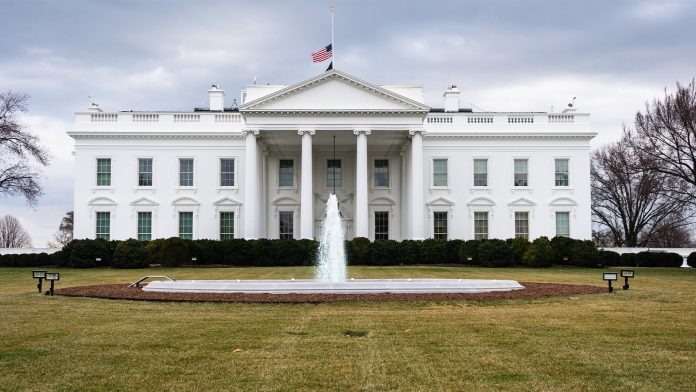The White House Joins TikTok: A New Chapter in America’s Social Media Story
In a striking move that echoes the digital age’s complex dance between politics, technology, and youth culture, the White House has just made its grand entrance onto TikTok.
Imagine the scene: the iconic residence of American power—its halls steeped in history and gravitas—has now planted its flag in the fast-moving, sometimes chaotic realm of short-form video. The White House’s new TikTok account, @whitehouse, launched with a burst of energy and a simple, cheeky message: “America, we are BACK! What’s up TikTok?” This was captioned alongside a punchy 27-second video, already racking up thousands of followers within its first hour.
But this isn’t just about a new social media strategy. It’s about the complicated, at times contradictory, relationship between the U.S. government and TikTok, a platform owned by the China-based company ByteDance—a subject steeped in geopolitical tension and domestic debate.
From Ban Threats to Embrace: A Social Media Saga
For years, TikTok has been under the microscope in Washington. Concerns about national security and data privacy have prompted lawmakers and officials to consider banning or forcing the sale of the platform’s U.S. operations to an American company. A federal law calling for such a move was set to kick in just before President Donald Trump’s inauguration in January, with deadlines looming thereafter.
But here’s the twist: despite being a vocal critic, Trump has softened his stance in recent months. Why? Because TikTok, with its mesmerizing algorithm and cultural sway, emerged as a surprising yet formidable tool in his 2024 presidential campaign—especially among younger voters. His personal account, which has amassed over a staggering 110 million followers, speaks volumes about TikTok’s political potency.
“TikTok became an unexpected battleground,” says Dr. Emily Chen, a media studies professor at Georgetown University. “It’s where culture, misinformation, mobilization, and politics intersect in real-time with a global audience. Trump’s pivot shows an evolving recognition of digital influence that transcends traditional media.”
Meanwhile, TikTok’s place in the US remains uncertain. The Trump administration extended the deadline for the company to find a non-Chinese buyer by another 90 days in June, with the clock ticking down to mid-September. Yet, as the White House’s own entry onto TikTok signals, the platform’s grip on American audiences is far from loosening.
A Closer Look at Numbers and Networks
- White House TikTok followers: approximately 4,500 within the first hour.
- Donald Trump’s personal TikTok followers: over 110 million (last post on 5 November 2024, Election Day).
- Trump’s X (formerly Twitter) followers: about 108.5 million.
- Truth Social (Trump-owned platform) followers: around 10.6 million.
- Official White House followers: 2.4 million on X and 9.3 million on Instagram.
These figures reveal that TikTok is not just another social site; it’s a central stage where millions of political narratives unfurl daily, where young voters and influencers create and consume content at lightning speed.
Voices From Inside and Out
What do people on the ground think? Martha Jenkins, a 22-year-old college student and avid TikTok creator from Ohio, shares her perspective: “It’s wild to see the White House here. It makes politics feel… I don’t know, more connected to where we are. It’s not just speeches on TV anymore. But it also means we have to be extra careful—TikTok’s algorithm can shape what people believe.”
Meanwhile, Mike O’Reilly, a cybersecurity expert in Washington, DC, offers a cautionary note: “The concerns about national security aren’t just political buzzwords. User data flows are complex, and when a platform owned by a foreign company gains access to millions of Americans’ information, that’s something to scrutinize closely.”
Still, the enthusiasm for engagement hasn’t dimmed. “Social media isn’t going away,” says O’Reilly. “It’s about finding a balance between openness and security.”
What Does This Mean for the Global Stage?
The White House’s TikTok account is more than a digital novelty. It’s a symbol of how governments worldwide are grappling with the new rules of communication and power. TikTok boasts nearly two billion users globally, making it a titan in the social landscape, shaping culture, politics, commerce, and identity.
In many ways, this latest move challenges us to reconsider the meaning of leadership in the digital era. When the President’s voice mingles with viral dances, comedic sketches, and flash polls, how does governance adapt? What happens to the traditional deference once keyed to carefully staged press conferences or formal announcements?
For global watchers, it invites a fresh lens: social platforms like TikTok aren’t just entertainment outlets—they’re arenas of influence, arenas where youth culture meets policy, where national borderlines blur in the digital marketplace of ideas and ideologies.
Looking Ahead: Questions to Ponder
As you scroll through your feeds, watching that 27-second welcome from the White House, ask yourself—how do you feel about politics in this new format? Is it democratizing conversation or muddying the waters of serious discourse?
The TikTok saga reflects broader truths about our moment in history—where state power, technology, and social change coexist in an uneasy but fascinating dance.
Will TikTok remain a platform for genuine political engagement or become another battleground for geopolitics and misinformation? Will the U.S. government’s embrace of the app signal a long-term shift in communication or a temporary detour?
Whatever the answers, one thing is clear: the intersection of the White House and TikTok marks a new chapter in how power speaks—and who listens—in the digital age.
—
Stay tuned, keep questioning, and let’s explore this evolving story together. After all, in this digital dialogue, every viewer counts, every voice matters.





